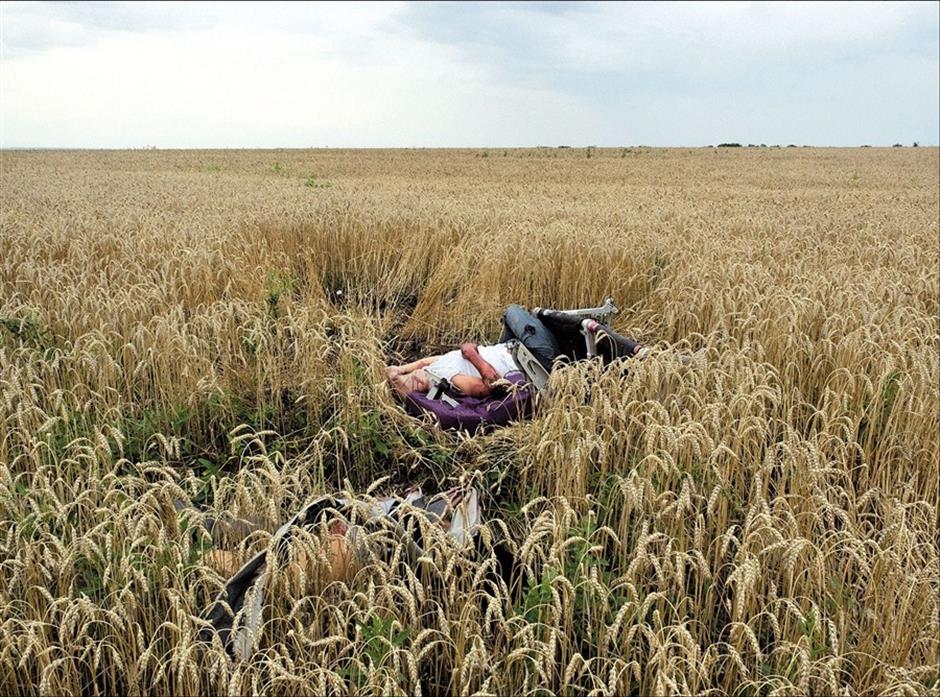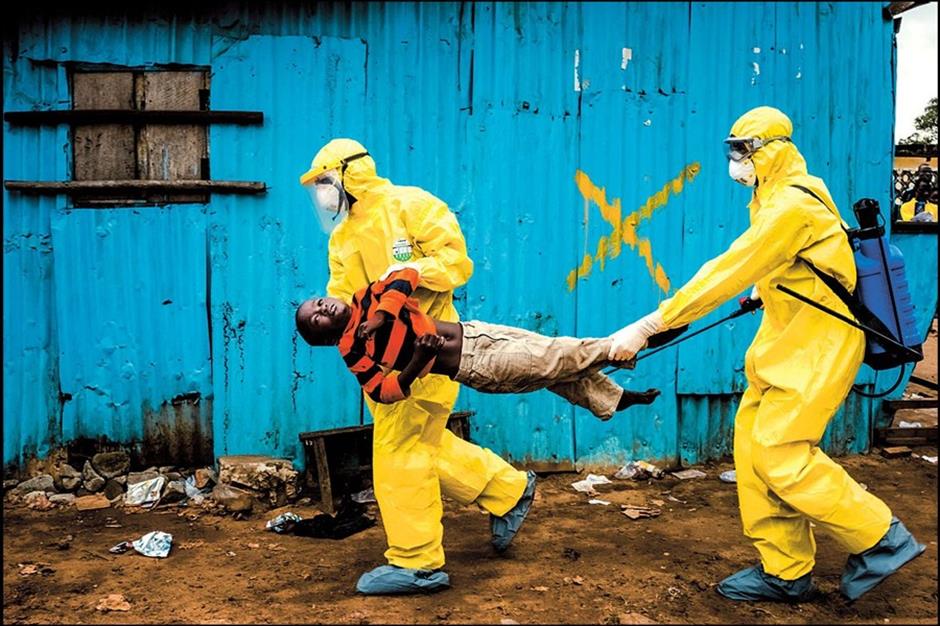Top images from Istanbul Photo Award coming to new museum

“East Ukraine Conflict,” by JeromeSessini, was awarded the top prizein the single news category at theIstanbul Photo Award 2014.

“Ebola Outbreak in Liberia,” byDaniel Berehulak, won the Photo 2014prize at Istanbul Photo Award 2014.
A man is strapped in an airplane seat, but the seat is no longer on the airplane. It lays in a vast wheat field. The gray sky and the yellow wheat is everything the man had at that last moment of his life.
This photo, by French photographer Jerome Sessini, captured a heart-wrenching moment after flight MH17’s crash in east Ukraine last July. It won first prize in the single news category at the Istanbul Photo Award 2014.
It was also jury member Liu Heung Shing’s personal favorite among more than 12,000 photos from 103 countries that competed for awards.
Except for Liu, the jury of the Istanbul Photo Awards 2014, which was established by Anadolu Agency, consisted of nine professionals, including TIME’s international photo editor Alice Gabriner, Getty’s senior director Georges de Keerle and French photojournalist Patrick Chauvel.
In March, awards were given out in four categories: news single, news story, sports single and sports story.
Although the winner, “East Ukraine Conflict,” is focused on one of the top news stories from 2014, it’s not because the photographer was at the right place at the right moment that he won the prize.
“It shows the photographer’s eye, how he captured the image. If he got too close, he would forget the wheat field,” Liu explained.
“He captured many things in that image, which leads the viewer to question, to guess, to interpret, to feel the emotional dialogue of this image.”
This photo, together with nearly 100 other award-winning and nominee works, will be exhibited at Shanghai Center of Photography (SC?P) from August 1 to 15.
SC?P was founded by Liu, the first accredited photographer for Time Magazine in China and a Pulitzer Prize winner in 1992.
He is famous for the images he captured during the development of China back in the 1970s and 1980s.
Works up for the Istanbul Award, like those which compete in many other photography competitions, mainly evolve around current affairs as well as human interest stories.
“Not just news photographers but also photographers doing all kinds of photography can always learn from exhibition like this about what’s been going on, what caught the attention of the jury members. It’s always a good reference.” said Liu about the upcoming exhibition.
Today, with technical advances, photography is more popular than ever. Everyone with a smartphone can take photos as he or she likes.
But capturing a truly iconic image is about much more than just hitting a button.
To arrive at an image that speaks to viewers and poses questions requires much more than just going to the scene and announcing “I’ve been there,” said Liu. That’s why many of the 12,000 images in the competition started to fade out when the jury members looked at them, and only a few of them remain.
SC?P opened to the public in May. Its first — and still ongoing exhibition — entitled “Embrace the Power of Photography,” showcases classical photography works from the 20th century, including works from renowned photographers such as Robert Capa, Annie Leibovitz, Dorothea Lange and Sally Mann.
The newly-opened center already has exhibition plans lined up for the coming year. Its next exhibition, which will focus on Chinese photography, will start in September.
SC?P has an exhibition space of only 500 square meters, which is relatively small compared to other new museums that are being built in China nowadays. Nevertheless, it’s a perfect place for showcasing photos, according to Liu.
“Because this place isn’t very big, it’s suitable for photography. I choose this place because I think it’s manageable.” Liu said, “For photography, all the classical images are 24 by 14 inches. So I don’t think photography necessarily need (much room).”
Located in Shanghai’s West Bund art district, SC?P has Long Museum, Yuz Museum, Shanghart, the West Bund Art Centre and Oriental Dreamworks Animation as its neighbors.
Its building, which was designed by US-based architects Sharon Johnston and Mark Lee for the West Bund Architecture and Contemporary Art Biennale in 2013, features a number of elliptical exhibition halls.
With gently curving interior walls, high ceilings and crescent-shaped skylights, soft natural light can enter the galleries without impacting the viewers’ experience of the works.
It reminds Liu of the small museum of the Maeght Foundation in Saint-Paul de Vence, France.
“It’s a small white building somewhere in the forest near the Mediterranean sea,” Liu recalled, “ I was so inspired when I walked into that space. I felt I was pulled immediately in to see the works in that tranquil environment.”
Liu plans to build the SC?P into Shanghai’s answer to ICP, the International Center of Photography in New York, which is one of the leading photography institution in the world.
SC?P will offer more than just photo exhibitions in the future. In its next exhibition, called “Grain to Pixel, A Story of Photography in China,” Peter MacGill, president of Pace/MacGill Gallery in New York, has been invited to SC?P to lead a talk and present a case study about what makes some photography works stand out from others.
“It will be a very interesting talk for the Chinese photographers.” Liu said, “They will be like, ‘Aha, that’s how the best gallery in the world works’.”















